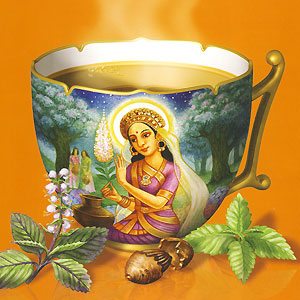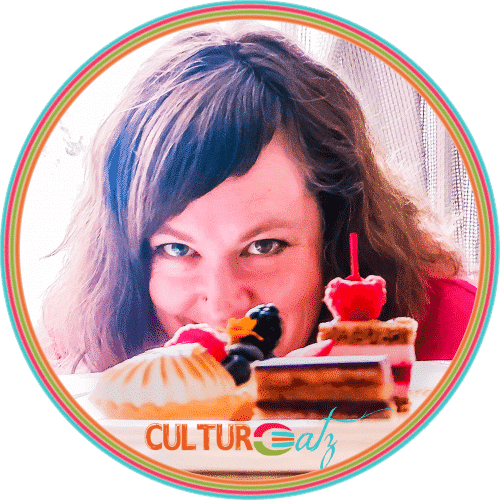OK so I have not cooked all week. Working hard to get movement back in my wrist at physio (which is torture but going very well) and it was my birthday last week…so I was not the one cooking. Hence I think this is a great opportunity to publish my second post of Ayurvedic Teas. In m first post I gave you all the recipe for a very sedative tea when you are having a bought of insomnia.
Although I don’t have an official diagnosis since last late spring I often have asthmatic symptoms. This is due to my weakness in getting bronchitis. And I find with spring’s allergies my breathing can be more difficult. I now have a prescription pump but I wanted to see if I could get a little bit of natural help by researching my book The Yoga of Herbs for herbs that calm the excited lungs. Well I found a mix that worked. I have to warn you it has an odd aftertaste but it does bring relief. You can use it when you have a cough , bronchitis, asthma or anything related to the respiratory system.
Ξ Asthma and Lung Tea Ξ
1/2 tsp Lobelia
1/2 tsp Mullein
1/2 tsp Hyssop
1/2 tsp Ashwagandha
1 cup of water
Put 1 cup of water in a pan and bring to a boil. Remove from heat and sprinkle the herbs on top. Cover and let steep for 15 minutes. Strain out the herbs. Ideally drink 3 times a day but.
I am lucky as in my city there is a store that sells such herbs by weight, but if you don’t have such a store there are great online stores like Mountian Rose Herbs which has a huge selection. Let’s take a quick look at the properties of each herb used:
Lobelia stimulates the nervous and respiratory system, helping one to take deeper and stronger breaths. It is a relaxant and also helps with nicotine withdrawal.
Mullein is an expectorant (loosens mucous), has anti-bacterial properties and has an soothing effect on the respiratory tract.
Hyssop is an expectorant (loosens mucous) and can be used as a gargle for sore throats.
Ashwagandha, known as Indian ginseng, is well known for its restorative benefits and strengthens the immune system. It helps with chronic inflammatory disorders, like asthma.
Nee a crash course in Ayurveda? OK here we go. Ayurveda is a traditional form of medicine used in India which has been around for about 5,000 years. It is considered an alternative medicine in the Western hemisphere. In other words it can work but no doctor will know about it. Still today 80% of the population in India use Ayurveda. The main goal is to treat the mind, body and spirit as one. Treatments and practices include diet, exercise, meditation and massage. Each person has one of three main constitutions (doshas): Vita, Pitta or Kapha. Once you know your main one and which other may be unbalanced, you can prepare medicines to help heal your ailment according to your constitution. The book I mentioned above will help you figure it all out. I am only somewhat familiar with the herbal healing aspect of Ayurveda. The energy and medicinal quality of herbs or spices are classified and used to balance your doshas. For short term use this recipe should work what ever your dosha is.
Disclaimer: I am not a doctor nor am I a trained healthcare professional. This post is for informational purposes only. This information should not be used as a substitute for a consultation or visit with a physician.





Happy Belated Birthday! Hope you had a wonderful one 🙂
And this tea sounds wonderful…great post!
All these ingredients are new to me, but it sounds like a great remedy. I hope you feel feel better. It must be hard to be asthmatic and having allergy together. Take care Evelyne!
I wasn’t familiar with Ayurveda at all, and have never heard of any of these herbs – feeling kind of ignorant, but thanks for the information! Glad to hear physio is going well!
Well I have had a cough I cannot shake and a bit of a sore throat, so funny aftertaste or not I think this is the thing. I hope you continue to mend, my dear!!
I hope you will feel better soon! Thanks for sahring this very aromatic and therapeutic tea!
Do feel better soon. All of those herbs are new names, so this is an interesting read. Thanks for sharing it.
Hopefully you get well soon. 🙁
Thank you for the great info! Living by the ocean I do have often sore throat, and will try Hyssop!